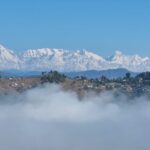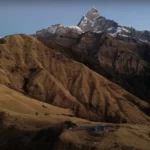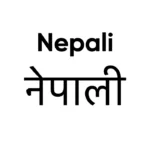The capital of Nepal is Kathmandu, also spelled Katmandu or Kantipur. The place is in a hilly region near the Baghmati and Vishnumati rivers. Its altitude is 4,344 feet (1,324 meters) above sea level. In 723, Raja Gunakamadeva founded Kathmandu under the name Manju-Patan. Later, it was renamed after a wooden temple called Kathmandu (kasthamandap), which means “wooden temple” or “edifice” in Nepali. The temple was said to have been built by Raja Lachmina Singh in 1596 from the wood of a single tree.
Today, the original temple still stands in the central square, and it’s used as lodging for holy men known as sadhus. From 1768 to 2008, Kathmandu served as the seat of the ruling Shah family of the Gurkha people.
History of Kathmandu
Thanks to Newar merchants ‘ work, Kathmandu is Nepal’s main business hub. It underwent significant construction in the 1970s and is now the centre of the national transportation system. Tribhuvan University was established there in 1959.
Landmarks and Monuments

Kathmandu has two prominent streets that stand out from the old areas, with narrow streets and brick houses featuring intricately carved doors and windows. The aftermath of the 1934 earthquake led to the construction of modern-style buildings. The city’s most prominent structure is the ancient palace of the Malla kings, which includes the Taleju temple (1549), erected by Raja Mahindra Malla. The palace’s primary entrance is protected by a statue of the god Hanuman, and nearby is a small square with several pagoda-style temples.
Tundi Khel and the Singha Palace
Towards the eastern direction of Kathmandu lies Tundi Khel, a parade ground where a tree stands in the centre of a stone platform. This used to be the spot where important government announcements were first made to the army. A tall watchtower built by Bhim Sen Thapa, a former prime minister, stands between the parade ground and the city.
Beyond the city limits, the Rana family built many palaces, with the most grandeur being the Singha Palace, which was once the official residence of the hereditary prime ministers and now serves as the government secretariat.
Bodhnath: A Buddhist Shrine
About 3 miles (5 km) northeast of Kathmandu is the Bodhnath, a revered Buddhist shrine among Tibetan Buddhists with a great white dome.

Sacred Site of Pashupatinath in Kathmandu
Pashupatinath is one of the world’s most revered and sacred Hindu temples, located in the heart of Kathmandu, Nepal. The temple is dedicated to Lord Shiva, one of the most important deities in Hinduism.
As you step into the temple complex, you’ll be mesmerized by the architectural beauty of the place. The intricate carvings, the ornate decorations, and the peaceful ambience will leave a lasting impression on you.

The temple is also a significant pilgrimage site for Hindus, who come from all over the world to pay their respects to Lord Shiva. If you’re looking for a spiritual experience in Kathmandu, Pashupatinath is a must-visit destination.
UNESCO World Heritage Site

The Kathmandu Valley, renowned for its historical and cultural significance, was declared a UNESCO World Heritage site in 1979. However, it was at risk of urbanization and was placed on the List of World Heritage in Danger in 2003. Thankfully, the government’s conservation efforts helped alleviate some of the concerns, and it was removed from the list in 2007.
Festivals in Kathmandu
Kathmandu has several festivals throughout the year. The Shivaratri and Machendra Jatra occur in spring, where the image of Machendra is carried in procession. The Gai Jatra, also known as the festival of the cow, happens in late summer. Finally, the Indra Jatra occurs in early autumn, where a young girl represents the goddess Devi and is carried in procession.
The Devastating Earthquake in Nepal
A powerful earthquake magnitude of 7.8 hits central Nepal on April 25, 2015, with its epicentre located approximately 50 miles (80 km) northwest of Kathmandu. At first, it was estimated that over 1,500 people had died due to the quake in the country. However, the fatalities quickly increased as rescue and recovery teams reached more remote areas. The disaster claimed the lives of around 9,000 individuals and left approximately 16,800 others injured across Nepal due to the primary earthquake and multiple aftershocks. The historic centre of Kathmandu was severely damaged, causing tens of thousands to lose their homes.
Conclusion
In conclusion, Kathmandu has a rich history and cultural significance. From its founding in the 8th century to its designation as a UNESCO World Heritage site, Kathmandu has played an important role in Nepal’s development and growth. Despite facing challenges like urbanization and natural disasters like the 2015 earthquake, the city continues to thrive and preserve its unique heritage. With its festivals, temples, and historic landmarks, Kathmandu is a must-visit destination for anyone interested in exploring Nepal’s culture and history.





Leave a Reply